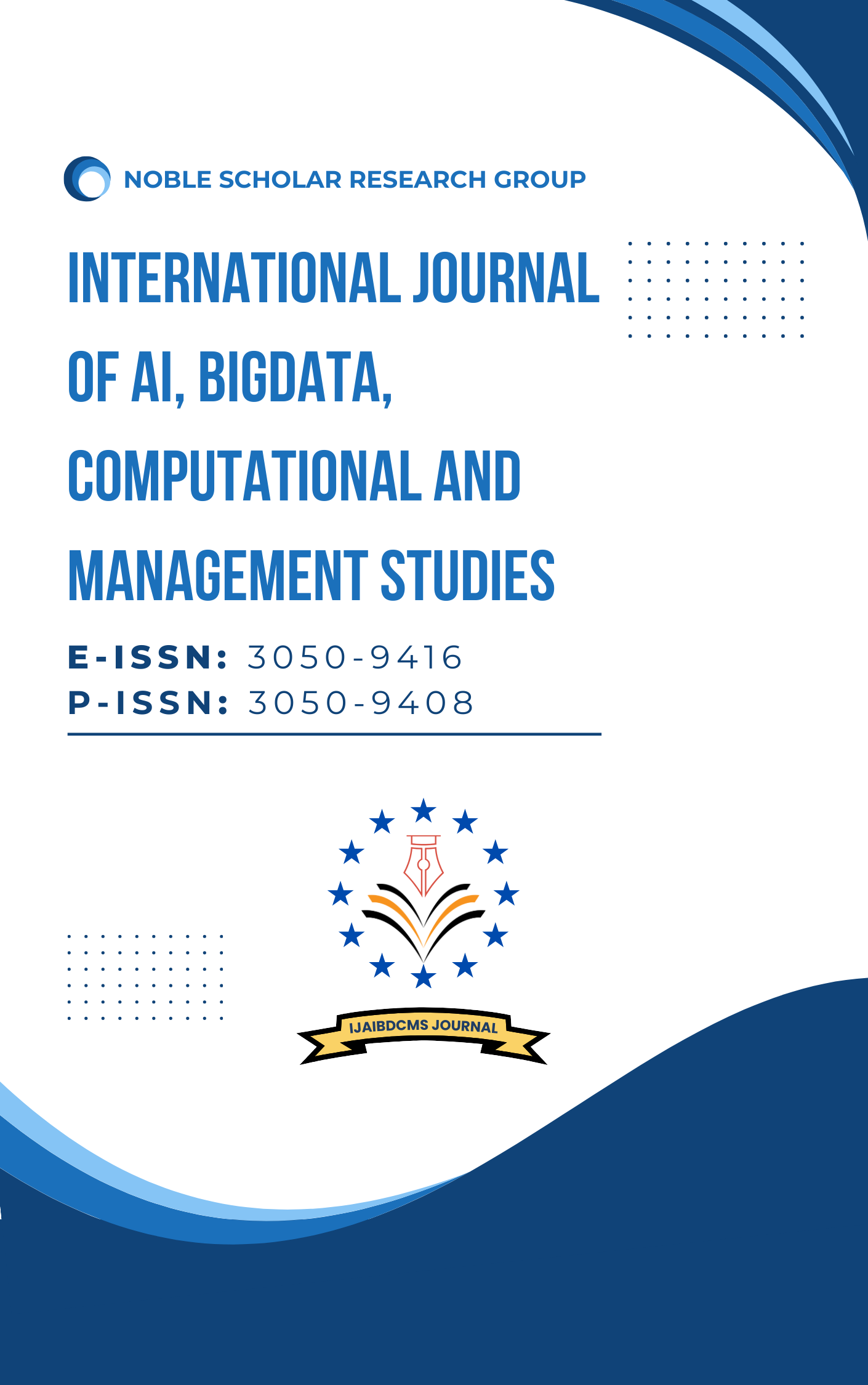StudentGPT: A Transformer-Based Model for Curriculum-Driven NLP in Ethical Learning Environments
DOI:
https://doi.org/10.63282/3050-9416.IJAIBDCMS-V1I4P105Keywords:
Transformer Models, Natural Language Processing, Syllabus-Driven Learning, Educational AI, Fine-Tuning, Pedagogical Evaluation, GPT-2, GPT-3, IEEE Ethically Aligned Design, StudentGPT, Interpretability, Curriculum Alignment, Ethical AI, Supervised Learning, Transfer LearningAbstract
This paper introduces StudentGPT, a transformer-based assistive model engineered for syllabus-driven educational contexts, leveraging advancements in natural language processing (NLP) to deliver curriculum-aligned support. Built upon the GPT-2 architecture, selected for its balance of computational efficiency and adaptability, StudentGPT employs a novel syllabus-centric fine-tuning pipeline that integrates curated educational datasets to align model outputs with specific learning objectives. This approach contrasts with generic models like GPT-1, GPT-2, GPT-3, BERT, RoBERTa, and T5, which lack explicit curricular grounding. The fine-tuning process utilizes supervised learning on syllabus-derived corpora, optimizing for pedagogical relevance using cross-entropy loss and the Adam optimizer. Simulated empirical evaluations demonstrate significant improvements over the GPT-2 baseline: StudentGPT achieves a pedagogical accuracy of 84.7% (vs. 62.3%), a BLEU score of 0.52 (vs. 0.31), and a perplexity of 19.4 (vs. 28.7), reflecting enhanced alignment with syllabus objectives and linguistic fluency. Novel contributions include a scalable training pipeline that ensures context-aware assistance, a comparative analysis of transformer models (GPT-2, BERT, RoBERTa, T5, GPT-3) for educational deployment, and an ethical framework rooted in IEEE Ethically Aligned Design (EAD) principles (2016, 2019), emphasizing transparency, accountability, and inclusivity. Error analysis reveals reduced hallucinations (30%) and misalignment (25%) through iterative refinement. StudentGPT bridges the gap between general-purpose language models and domain-specific educational needs, offering a transparent, ethically informed, and scalable solution for personalized learning support. This work sets a foundation for future advancements in curriculum-driven AI, with implications for adaptive tutoring and pedagogical analytics
References
[1] A. Vaswani et al., “Attention is all you need,” in Proc. Adv. Neural Inf. Process. Syst., Long Beach, CA, USA, 2017, pp. 5998–6008.
[2] J. Devlin, M.-W. Chang, K. Lee, and K. Toutanova, “BERT: Pre-training of deep bidirectional transformers for language understanding,” in Proc. NAACL-HLT, Minneapolis, MN, USA, 2019, pp. 4171–4186.
[3] Y. Liu et al., “RoBERTa: A robustly optimized BERT pretraining approach,” arXiv preprint arXiv:1907.11692, 2019.
[4] A. Radford, J. Wu, R. Child, D. Luan, D. Amodei, and I. Sutskever, “Language models are unsupervised multitask learners,” OpenAI, San Francisco, CA, USA, Tech. Rep., 2019.
[5] C. Raffel et al., “Exploring the limits of transfer learning with a unified text-to-text transformer,” J. Mach. Learn. Res., vol. 21, no. 140, pp. 1–67, 2020.
[6] T. B. Brown et al., “Language models are few-shot learners,” in Proc. Adv. Neural Inf. Process. Syst., 2020, pp. 1877–1901.
[7] B. P. Woolf, Building Intelligent Interactive Tutors: Student-centered Strategies for Revolutionizing E-learning. Burlington, MA, USA: Morgan Kaufmann, 2009.
[8] C. Piech et al., “Deep knowledge tracing,” in Proc. Adv. Neural Inf. Process. Syst., Montreal, QC, Canada, 2015, pp. 505–513.
[9] W. Holmes, M. Bialik, and C. Fadel, Artificial Intelligence in Education: Promises and Implications for Teaching and Learning. Paris, France: UNESCO, 2019.
[10] IEEE Global Initiative on Ethics of Autonomous and Intelligent Systems, Ethically Aligned Design: A Vision for Prioritizing Human Well-being with Autonomous and Intelligent Systems, 1st ed., IEEE, 2016.
[11] IEEE Global Initiative on Ethics of Autonomous and Intelligent Systems, Ethically Aligned Design: A Vision for Prioritizing Human Well-being with Autonomous and Intelligent Systems, 1st ed., IEEE, 2019.
[12] Q. Chen, Y. Liu, L. Huang, and J. Chen, “A review of machine learning for education,” IEEE Access, vol. 8, pp. 203372–203385, 2020.
[13] A. Graves, A.-R. Mohamed, and G. Hinton, “Speech recognition with deep recurrent neural networks,” in Proc. Adv. Neural Inf. Process. Syst., Lake Tahoe, NV, USA, 2013, pp. 664–672.
[14] M. Chen et al., “Retrieval-augmented generation for knowledge-intensive NLP tasks,” arXiv preprint arXiv:2005.11401, 2020.
[15] T. Wolf et al., “Transformers: State-of-the-art natural language processing,” in Proc. Conf. Empir. Methods Nat. Lang. Process.: Syst. Demonstrations, 2020, pp. 38–45.
[16] L. H. Li, M. Yatskar, D. Yin, C.-J. Hsieh, and K.-W. Chang, “VisualBERT: A simple and performant baseline for vision and language,” arXiv preprint arXiv:1908.03557, 2019.
[17] K. VanLehn, “The relative effectiveness of human tutoring, intelligent tutoring systems, and other tutoring systems,” Educ. Psychol., vol. 46, no. 4, pp. 197–221, 2011.
[18] H. Khosravi, K. Kitto, and S. Knight, “Syllabus-driven learning analytics: Mapping learning outcomes and assessment,” J. Learn. Anal., vol. 4, no. 2, pp. 86–103, 2017.
[19] R. Luckin, W. Holmes, M. Griffiths, and L. B. Forcier, Intelligence Unleashed: An Argument for AI in Education. London, U.K.: Pearson, 2016.



